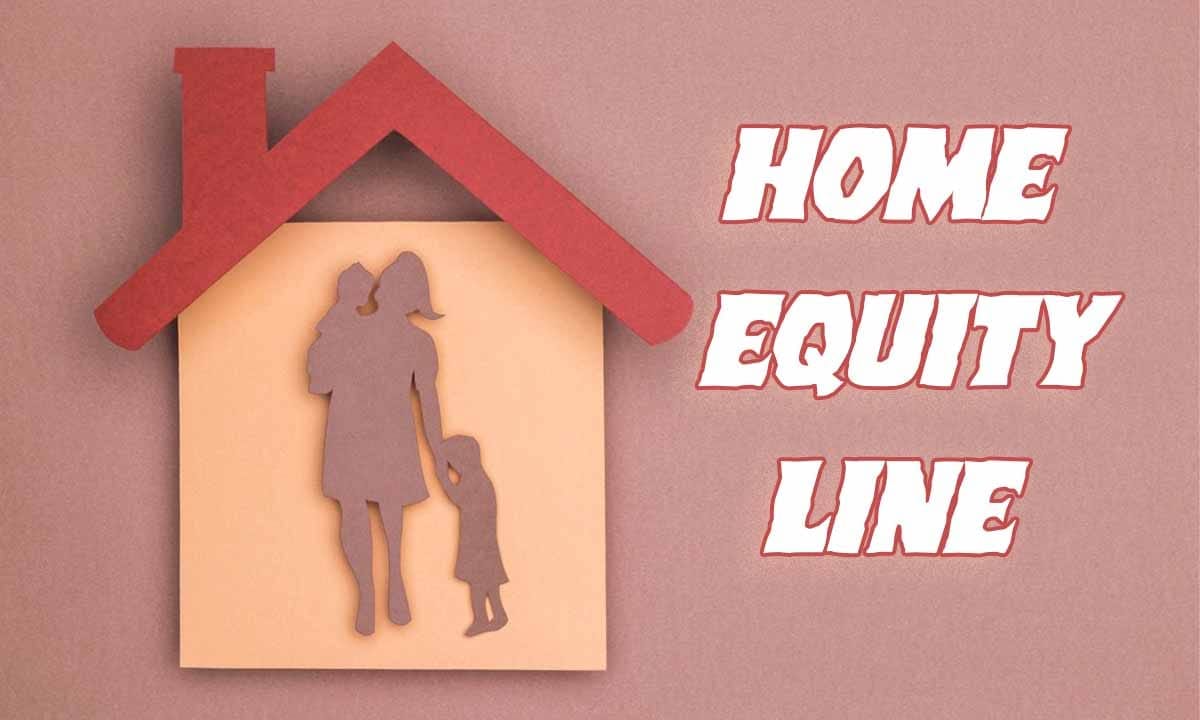Homeownership often serves as the cornerstone of personal wealth and financial security. As homeowners diligently pay off their mortgage, they build a valuable financial resource known as home equity. Tapping into this equity can provide substantial economic benefits, one of which is through a Home Equity Line of Credit (HELOC). This article delves into the intricacies of home equity and HELOCs, exploring their definitions, benefits, risks, and much more.

Understanding Home Equity
Definition of Home Equity
Home equity represents the portion of your property that you truly own. It is calculated by subtracting the outstanding mortgage balance from the current market value of your home. Essentially, it is the financial stake you have in your property.
How Home Equity Builds Over Time
Home equity grows over time through two primary mechanisms: paying down the mortgage principal and appreciation in property value. As you make monthly mortgage payments, a portion goes towards reducing the principal balance, thereby increasing your equity. Additionally, if the market value of your home rises, so does your equity.
Factors Affecting Home Equity
Several factors influence the growth of home equity. Market conditions play a significant role, as a booming real estate market can substantially increase your property’s value. Conversely, economic downturns may erode home equity. Home improvements and maintenance can also enhance property value, contributing to equity growth.
Introduction to Home Equity Line of Credit (HELOC)
What is a Home Equity Line of Credit?
A Home Equity Line of Credit (HELOC) is a revolving line of credit secured by the equity in your home. Unlike a lump-sum home equity loan, a HELOC allows you to borrow funds as needed, up to a predetermined credit limit, and repay them over time.
HELOC vs. Home Equity Loan: Key Differences
While both HELOCs and home equity loans leverage home equity, they differ fundamentally. A home equity loan provides a lump sum with fixed interest rates and repayment terms. In contrast, a HELOC offers flexibility, allowing you to borrow and repay repeatedly during the draw period, typically with variable interest rates.
How a HELOC Works
A HELOC functions similarly to a credit card. During the draw period, you can borrow funds as needed, up to your credit limit. You pay interest only on the amount borrowed. After the draw period ends, the repayment period begins, during which you repay the principal and interest.
Benefits of a Home Equity Line
Flexible Borrowing: Accessing Funds When Needed
A HELOC provides the flexibility to access funds as needed, making it ideal for ongoing or unexpected expenses. You are not obligated to use the entire credit limit, and you only pay interest on the amount you borrow.
Lower Interest Rates Compared to Other Loans
HELOCs typically offer lower interest rates than unsecured loans or credit cards because they are secured by your home. This can result in significant savings, especially for large expenditures.(NerdWallet: Finance smarter).
Tax Advantages of a HELOC
Interest paid on a HELOC may be tax-deductible if the funds are used for home improvements, subject to IRS regulations. This potential tax benefit can enhance the financial appeal of a HELOC.
Potential Risks and Drawbacks
Fluctuating Interest Rates: What You Need to Know
HELOCs often come with variable interest rates, which can fluctuate based on market conditions. While initial rates may be low, they can increase, leading to higher monthly payments.
The Risk of Over-Borrowing
The flexible nature of a HELOC can tempt homeowners to borrow more than they can comfortably repay. Over-borrowing can lead to financial strain and even the risk of foreclosure if payments are missed.
Impact on Home Equity and Property Value
Borrowing against your home reduces the equity you have built. Additionally, if property values decline, you could owe more than your home is worth, putting you in a precarious financial position.
Qualifying for a Home Equity Line
Eligibility Requirements
To qualify for a HELOC, lenders typically require a significant amount of equity in your home, often at least 15-20%. Other requirements include a stable income, a good credit history, and a low debt-to-income ratio.
Credit Score and Financial Health
A strong credit score improves your chances of approval and may secure better interest rates. Lenders assess your overall financial health, including income stability and existing debt, to determine your creditworthiness.
Home Appraisal and Equity Assessment
Lenders will conduct a home appraisal to determine its current market value. This appraisal is crucial in calculating your available equity and setting your credit limit.
The Application Process
Steps to Apply for a HELOC
Applying for a HELOC involves several steps: assessing your financial situation, choosing a lender, submitting an application, providing necessary documentation, and undergoing a property appraisal. The lender then reviews your application and determines your eligibility.
Documents Needed for the Application
Typical documents required for a HELOC application include proof of income (pay stubs, tax returns), proof of homeownership (deed, mortgage statement), and identification (driver’s license, Social Security number).
Understanding the Approval Timeline
The approval process for a HELOC can take several weeks. It involves credit checks, property appraisal, and thorough review of your financial documents. Patience and preparedness are key during this period.
How to Use a Home Equity Line
Home Improvements: Maximizing Your Property Value
Using a HELOC for home improvements can increase your property’s value and, subsequently, your equity. Projects like kitchen remodels, bathroom upgrades, and energy-efficient installations offer high returns on investment.
Debt Consolidation: Streamlining Your Finances
A HELOC can be an effective tool for debt consolidation. By paying off high-interest debts with a HELOC, you can streamline your finances and potentially lower your overall interest costs.
Emergency Expenses and Financial Flexibility
HELOCs provide a financial safety net for emergencies. Having access to funds can alleviate the stress of unexpected expenses, such as medical bills or urgent home repairs.
Managing Your HELOC
Repayment Terms and Strategies
Repayment terms for a HELOC vary but generally include interest-only payments during the draw period, followed by principal and interest payments during the repayment period. Developing a repayment strategy early can help manage your finances effectively.
Monitoring Interest Rates and Payments
Keeping an eye on interest rate fluctuations and making payments on time is crucial. Consider making additional payments towards the principal to reduce overall interest costs and shorten the repayment period.
Avoiding Common Pitfalls
Common pitfalls include over-borrowing, mismanaging funds, and neglecting repayment obligations. To avoid these, maintain a disciplined borrowing approach and regularly review your financial situation.
Alternatives to a Home Equity Line
Personal Loans vs. HELOC: Pros and Cons
Personal loans offer fixed interest rates and predictable monthly payments, making them a stable alternative to HELOCs. However, they often come with higher interest rates and no tax benefits.
Cash-Out Refinancing: An Alternative Option
Cash-out refinancing involves replacing your existing mortgage with a new one that has a higher balance, allowing you to take out the difference in cash. This option can provide a lump sum of money at a potentially lower interest rate than a HELOC.
When to Consider a Second Mortgage
A second mortgage provides a lump sum of cash and can be a viable alternative for those who need a significant amount of money upfront. It usually comes with fixed interest rates and predictable payments.
BOTTOM LINE
Recap of Key Points
Home equity lines offer flexible borrowing options, lower interest rates, and potential tax advantages. However, they also come with risks, such as fluctuating interest rates and the potential for over-borrowing.
Making Informed Financial Decisions
Understanding the nuances of HELOCs and carefully assessing your financial situation can help you make informed decisions. Weigh the benefits and risks to determine if a HELOC is the right choice for you.
Future Trends in Home Equity Lines
As the financial landscape evolves, so do the trends in home equity lines. Stay informed about changes in interest rates, lending practices, and market conditions to maximize the benefits of your HELOC.
Frequently Asked Questions (FAQs)
What is the Meaning of Home Equity Line?
A Home Equity Line of Credit (HELOC) is a revolving line of credit secured by the equity in your home. Unlike a traditional home equity loan, which provides a lump sum, a HELOC allows you to borrow as needed, similar to a credit card, during the draw period. The loan is secured by the equity in your home, which is the market value of the home minus any outstanding mortgage balance.
How to Use Home Equity?
Home equity can be utilized in various ways, such as financing home improvements, consolidating debt, paying for education, or covering emergency expenses. By tapping into the equity, homeowners can access funds at typically lower interest rates compared to unsecured loans or credit cards. This flexibility makes home equity an attractive option for those needing substantial financial resources.
How is Equity Line Calculated?
To calculate a HELOC, lenders use a formula based on the loan-to-value (LTV) ratio. Typically, you can borrow up to 85% of your home’s value minus any outstanding mortgage balance. For example, if your home is worth $300,000 and you owe $150,000 on your mortgage, you could potentially get a HELOC for up to $105,000 (85% of $300,000 minus $150,000).
How Does Equity Work?
Equity in a home builds as you pay down your mortgage and as the property’s market value increases. The difference between the current market value of the home and the remaining mortgage balance constitutes the homeowner’s equity. This equity can be leveraged for loans such as HELOCs, which use the home as collateral.
Why is it Called a Home Equity Loan?
It is called a home equity loan because the loan is secured against the equity of the homeowner’s property. The term “equity” refers to the portion of the property that the homeowner actually owns, free of any liens or mortgages. This equity acts as collateral for the loan, providing security to the lender.
How to Calculate Equity?
To calculate home equity, subtract the outstanding balance of all mortgages from the current market value of the home. For example, if your home is valued at $400,000 and you owe $250,000 on your mortgage, your equity is $150,000.
What Bank has the Best Home Equity Loan?
Several banks offer competitive home equity loan rates, but it’s essential to compare terms, fees, and interest rates. As of recent evaluations, some top contenders include Wells Fargo, Chase, and Bank of America. Each offers unique benefits, so it’s crucial to shop around and find the best fit for your financial needs.
What is the Interest Rate on a HELOC?
HELOC interest rates vary depending on the lender, your credit score, and the prime rate. Typically, HELOCs have variable interest rates that fluctuate with the market. As of recent trends, rates can range from 3% to 7%, but it’s wise to check with multiple lenders for the most accurate and up-to-date rates.
Are Home Equity Lines Hard to Get?
Qualifying for a HELOC depends on several factors including credit score, income, and the amount of equity in your home. Generally, lenders require a minimum credit score of 620 and a debt-to-income ratio below 43%. Meeting these requirements can help you secure a HELOC more easily.
How Much Equity Do I Need in My Home?
Most lenders require you to have at least 15% to 20% equity in your home to qualify for a HELOC. This means if your home is worth $300,000, you should have at least $45,000 to $60,000 in equity. This equity provides the security needed for lenders to offer you a line of credit.
What is the Monthly Payment on a $100,000 HELOC?
The monthly payment on a $100,000 HELOC varies depending on the interest rate and whether you are in the draw or repayment period. For an interest-only payment at 4%, the monthly cost would be approximately $333. If you’re paying both principal and interest, the payment could be around $740.
What Can I Use a Home Equity Loan For?
A home equity loan can be used for a variety of purposes including home renovations, debt consolidation, education expenses, and unexpected emergencies. Its flexibility and typically lower interest rates compared to other forms of credit make it a versatile financial tool.
What is the Maximum Equity?
The maximum equity you can tap into with a HELOC typically depends on your lender’s terms, but most lenders allow you to borrow up to 85% of your home’s value minus any existing mortgage balance. This ensures there is still some equity remaining in the property as a cushion for the lender.
Expert Tips for Managing a HELOC
Create a detailed budget before borrowing.
Make extra payments to reduce the principal balance.
Regularly review your financial goals and adjust your strategy accordingly.
Resources for Further Reading and Assistance
Consult financial advisors for personalized advice.
Explore online resources from reputable financial institutions.
Stay updated with the latest real estate market trends and lending practices.
For more detailed information, you can check the sources: NerdWallet, Investopedia, and Capital One (Bank of America) (NerdWallet: Finance smarter) (Capital One).









